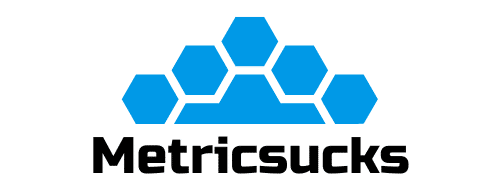How Can Pre-Exhaustion Training Benefit Bodybuilders Preparing for Competition?

Bodybuilding is a competitive sport that demands physical strength, dedication, and strategic planning. One of the key aspects of this sport is the intense training that each athlete must undertake to sculpt their bodies into a state of peak physical condition. Among various training techniques, one method has been continually recognized for its profound impacts on the athlete’s performance – Pre-Exhaustion training. For those eyeing their next competition, understanding the relevance and benefits of pre-exhaustion training can be a game-changer.
Concept of Pre-Exhaustion Training
Pre-exhaustion training is a method utilized by athletes, particularly bodybuilders, when preparing for competition. The concept is simple yet effective. The athlete begins by isolating and exhausting a specific muscle group with a single-joint exercise before moving onto a compound, multi-joint movement that targets the same muscle group. This technique allows the muscle group to be effectively fatigued, enhancing its potential for growth and strength.
A lire également : What Are the Challenges in Talent Development for Multi-Sport Athletes like Decathletes?
Scholars have delved into the realm of pre-exhaustion training, with numerous studies available on Google Scholar and PubMed highlighting its benefits and effectiveness. This information provides a solid foundation for bodybuilders and athletes seeking to optimize their training and competition preparation.
Enhancing Strength and Muscle Growth
Pre-exhaustion training has significant benefits for bodybuilders aiming to increase their strength and muscle size. When a specific muscle group is exhausted through single-joint exercises, it is primed for the subsequent multi-joint workouts. This method ensures that the target muscle reaches its fatigue threshold, thereby stimulating increased muscle fiber activation and promoting growth.
A voir aussi : What’s the Potential of Smart Fabrics in Regulating Body Temperature During Marathons?
It’s crucial to remember, though, that this technique requires a high level of will and determination. The initial isolation exercises can be challenging, and it’s only through pushing past this initial fatigue that the true benefits of pre-exhaustion training can be reaped.
Optimizing Body Composition
Another benefit of pre-exhaustion training is its impact on body composition. Competition prep often involves a strict regimen aimed at reducing body fat while maintaining muscle mass. Pre-exhaustion training can aid in achieving this balance. According to a study indexed on PubMed, this method of training can enhance energy expenditure and metabolic rate, thereby facilitating fat loss while preserving muscle mass.
It’s also worth noting that pre-exhaustion training can boost intramuscular water content. This is beneficial as increased muscle hydration can create a fuller, more defined muscle appearance – a desirable trait for bodybuilders stepping on stage.
Efficient Use of Training Time
Time is a crucial factor when preparing for a bodybuilding competition. Athletes need to make the most out of each training day. Pre-exhaustion training is a time-efficient method as it allows for targeted muscle training without the need for long, drawn-out workouts.
This approach allows bodybuilders to focus their energy and time on specific muscle groups, leading to more efficient training sessions. However, it’s critical to ensure that rest and recovery are also factored into the training schedule. Overtraining can lead to injury and hinder competition prep.
Incorporating Pre-Exhaustion Training Into Your Routine
Integrating pre-exhaustion training into your routine requires careful planning and consideration. It’s essential to identify the muscle groups you wish to focus on and determine the corresponding isolation and compound exercises.
For instance, if you aim to enhance your chest muscles, you might begin with a single-joint exercise like dumbbell flyes before moving onto a compound movement such as the bench press. This technique ensures that your pectoral muscles are exhausted and then further targeted in the compound exercise, leading to improved muscle growth and strength.
Remember, pre-exhaustion training should be used strategically and supplemented with a balanced diet, good hydration, and adequate rest. It’s also advisable to consult with a fitness professional before implementing this method into your routine to ensure it’s tailored to suit your individual needs and competition goals.
Maximizing the Effects of Pre-Exhaustion Training
To make the most out of pre-exhaustion training, bodybuilders need to dedicate themselves to a comprehensive and balanced approach. The use of supplements, like whey protein, can be beneficial to optimize muscle recovery and growth. Ever-reliable Google Scholar and PubMed offer an abundance of free articles exploring the benefits of such supplements in tandem with pre-exhaustion training.
The timing of meals, especially pre-workout nutrition, is equally as important. Consuming a balanced meal or snack before your training session can supply your body with the necessary energy to perform the intense workouts required for pre-exhaustion training.
Another essential aspect is hydration. As mentioned earlier, pre-exhaustion training can boost the intramuscular water content, leading to a more defined muscle appearance, vital for a bodybuilding competition. Therefore, maintaining proper hydration levels before, during, and post-workout enhances the effects of pre-exhaustion training.
Lastly, according to a PMC free article, the integration of both resistance and weight training into your routine can enhance the benefits of pre-exhaustion training. By engaging in both forms of exercise, you can achieve optimal muscle growth, body composition, and overall performance, thereby maximizing your contest prep.
Remember, it’s important to open a separate window for recovery. Overdoing it can lead to muscle strain, injury, and counterproductive weight loss. As is often said in sports med articles, "Rest is as important as the workout itself."
Conclusion
Pre-exhaustion training, when done correctly, can be a potent tool for bodybuilders preparing for competition. It offers numerous benefits, including enhanced muscle growth, improved body composition, and efficient use of training time. This method, backed by numerous studies available on Google Scholar and PubMed, has been shown to dramatically impact an athlete’s performance.
However, like any training regime, pre-exhaustion training should be undertaken with careful planning and consideration. It’s not just about exhausting and training the muscles but also about taking care of them through proper nutrition, hydration, and recovery.
Each bodybuilder is unique, and what works for one may not necessarily work for another. Therefore, always consult with a fitness professional or do your research before implementing a new training regime. This way, you can ensure that you’re using the pre-exhaustion technique in a way that best suits your needs and helps you reach your bodybuilding competition goals.
Remember, the road to a successful bodybuilding competition doesn’t lie solely in how much you can lift or how many hours you can spend in the gym. It’s about smart, strategic training, coupled with proper nutrition and rest. Pre-exhaustion training, when used right, can bring you one step closer to that coveted trophy.
